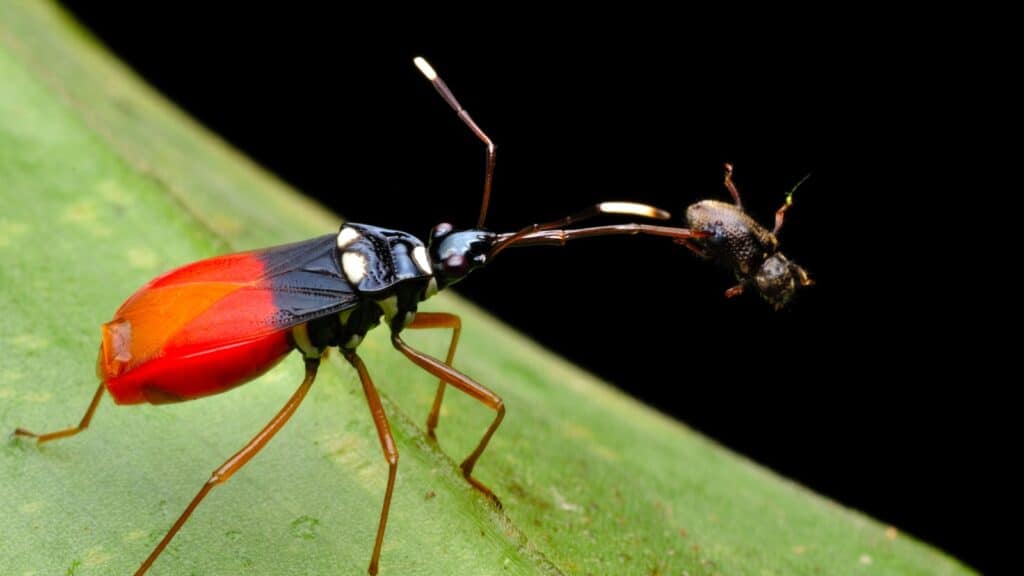7 Deadly Insects That Have Invaded The United States & 10 Predators Who May Just Save Us
Deadly insects. Just the concept sends chills down our spines! And guess what? A slew are here in the U.S., including some really big flying spiders. Yeah, you read that right.
In recent years, the United States has seen a surge in the arrival of deadly insects from around the world, many of which were previously unknown to the region. These invasive species have brought with them new threats to human health, agriculture, and ecosystems. From venomous stings to painful bites, these insects can cause severe reactions, allergic responses, and even death. Here are 7 examples of deadly insects that have invaded the United States, posing significant risks to both humans and the environment.
Asian Giant Hornet

Native to eastern and southeast Asia, these hornets have made their way into the Pacific Northwest, potentially via shipping containers. Their venom can cause kidney failure and death, responsible for approximately 50 deaths yearly.
Killer Bees

Originating in Brazil, these bees have spread into the southwestern United States. They are aggressive and can chase people up to a quarter of a mile from their hives, responsible for a dozen deaths in the U.S. over the past 30 years.
Fire Ants

Imported from South America, fire ants are now found across the southern United States. They are aggressive and can cause severe reactions, responsible for around a dozen deaths yearly in the U.S.
Joro Spiders

Native to Southeast Asia, these venomous flying spiders have been unintentionally transported to the U.S. via cargo shipments and international travel. They are expected to spread across the eastern U.S. and can cause discomfort and allergic reactions in some people.
Brown Recluse Spiders

While not new to the U.S., their spread has increased in recent years. They are found in damp basements and can cause tissue death if bitten.
Black Widow Spiders

Found in the southern and western U.S., their venom can cause severe pain and long-term complications if it targets the nervous system.
Bullet Ants

Native to Congo, these ants are known for their extremely painful bites, which can cause paralysis. While not widespread in the U.S., they are a growing concern due to their potential to spread through international travel and trade.
Are There Any Natural Predators?

The good news is that there are natural predators! Of course, some of them sound just as bad. Water scorpions anyone? Yikes.
In the ongoing battle against invasive and deadly insects, nature has its own arsenal of predators that can help keep these pests in check. From the skies to the soil, a diverse array of insects, arachnids, and other organisms have evolved to prey on the very insects that pose a threat to human health and ecosystems. These natural predators play a crucial role in maintaining ecological balance and can be a valuable tool in integrated pest management strategies. Here are ten examples of natural predators that feed on the deadly insects that have invaded the United States in recent years.
Robber Flies

These flies are predators of other insects, including wasps, bees, and spiders. They are known for their sharp eyesight and high-speed flight, which allows them to catch prey in mid-air.
Water Scorpions

These insects are predators of small aquatic animals, including mosquito larvae and diving beetles. They use their strong, modified forelegs to capture prey.
Praying Mantis

Praying mantis are known for their voracious appetite and can feed on a wide variety of insects, including spiders, lizards, small snakes, and even birds. They are skilled flyers and can ambush their prey using their long, modified forelegs.
Antlion Larvae

Antlion larvae are predators of ants and other small insects. They dig funnel-shaped pits in sandy areas and use their jaws to capture and suck the body fluids of their prey.
Assassin Bugs

Assassin bugs are predators of various insects, including spiders, ants, and beetles. They use their needle-like mouthparts to inject lethal saliva into their prey, which then liquifies the prey’s innards.
Ladybugs

Lady beetles, also known as lady beetles, are predators of aphids, caterpillars, moth eggs, scales, mites, and other small insects. They are voracious eaters and can consume up to 5,000 aphids in their lifetime.
Ground Beetles

Ground beetles are predators of aphids, caterpillars, beetle larvae, fly larvae, mites, springtails, slugs, and small weed seeds. They are skilled runners and can detect prey by sight and scent.
Green Lacewings

Green lacewing larvae are predators of aphids, small caterpillars, and beetle larvae. They are known for their lacy-looking wings and can eat between 100 and 150 aphids in their lifetime.
Spiders

Spiders are predators of a wide range of insects and mites. They use their webs to capture prey and can also stalk and hunt insects actively.
Predatory Mites

Predatory mites are predators of pest mites, scales, thrips, and insect eggs. They are often used in biological control methods to manage pest populations.






